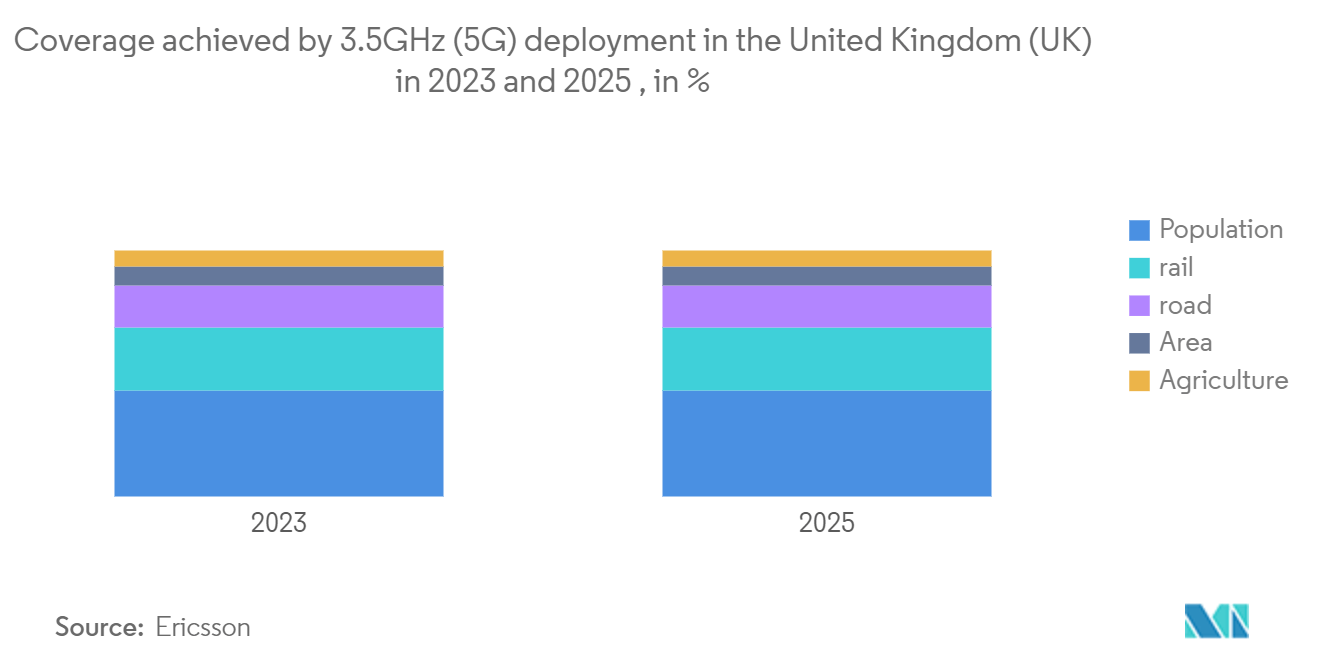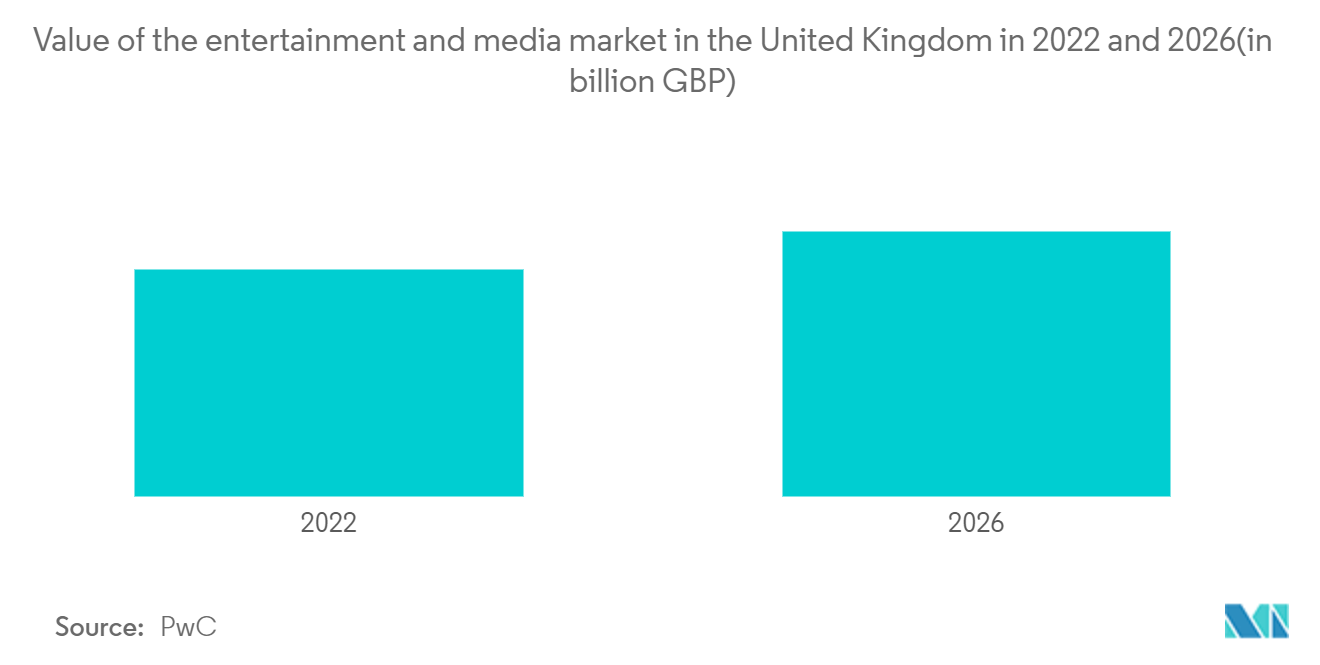Market Trends of United Kingdom Satellite Communications Industry
Government policies will drive the market
- The United Kingdom has outlined far-reaching ambitions for communications technologies such as satellites in a massive new policy endeavor. Its most recent Wireless Infrastructure Strategy outlines the importance that technologies like satellites will play as the United Kingdom strives to be at the forefront of communications and connectivity. The government is introducing an 8 million pound ($9.92 million) fund to provide capital grants to the most remote 35,000 premises to promote new satellite communication.
- The government aims to provide nationwide standalone 5G connectivity in all populous locations by 2030. In addition, the government will invest 40 million pounds ($49.58 million) to construct eight to ten 5G Innovation Regions around the United Kingdom. This policy will allow regions and local governments to unlock opportunities by tailoring advanced wireless connectivity to each area's specific needs and strengths, encouraging 5G adoption in the public sector and industry, and strengthening the case for local investment, driving productivity and growth.
- In December 2022, to assess the capacity and viability of Low-Earth Orbit (LEO) satellites for providing high-speed connection to homes and businesses in remote places. The United Kingdom has launched seven sites across the country, utilizing a combination of OneWeb and Starlink technology. Snowdonia National Park, North York Moors, Papa Stour, and Lundy Island are among the locations included in this list.
- The UK Space Agency has announced a £50 million investment in bold and innovative initiatives to boost the UK's satellite communications industry. The funding, which is part of the European Space Agency's (ESA) Advanced Research in Telecommunications Services (ARTES) program, is available for a variety of projects, including the development of new satellite constellations, ground systems to access them, and entire end-to-end systems delivering new services to customers. These could include integrating 5G technology to enable people and machines to connect and modernizing infrastructure to help new markets and services.
- Another significant strategy component is introducing a new long-term national mission, with initial funding of up to 100 million pounds ($123.96 million), intending to keep the United Kingdom at the forefront of future telecoms and 6G technology. From complex AI and quantum-enabled networks of satellites and drones to fiber-optic networks, the UK government sees these following generation networks ushering in a new, more decadent generation of internet-based services, powering a quickly rising global digital economy, and supporting net zero.
- A crucial component of this mission will be a network of future telecoms research centers, where early-stage research will be coordinated by UKRI and the Engineering and Physical Sciences Research Council (EPSRC) under the Technology Missions Fund (TMF).

Entertainment industry is expected to grow at a significant CAGR
- Satellite communication has changed the entertainment sector by enabling efficient content distribution across geographical borders, resulting in a larger audience and new business models. The technology allows high-quality multimedia distribution that gives users an immersive experience at a low cost and excellent reliability. The music industry, in particular, has benefited from the rise of streaming services and digital music platforms, with satellite communication enabling efficient music distribution, the emergence of new genres and independent artists, and the creation of new revenue streams for artists and labels.
- Satellite communication has also aided in the creation of new business models in the UK entertainment industry. Subscription-based streaming services, for example, have grown in popularity, allowing entertainment firms to monetize their material in novel ways. These services provide consumers access to an extensive library of content for a fixed monthly fee, generating a consistent source of revenue for entertainment firms. In the United Kingdom, all of the major streaming platforms are available. With 84% of Britons subscribed to Netflix in 2020, it is the undisputed ruler of the UK streaming business. Amazon Prime came in second with a respectable 62%, then Disney+ with 26%, and Now TV with 12%.
- Satellite communication has instantaneously enabled content makers to access a broader, more diverse audience worldwide. It has enabled content providers to reach previously inaccessible audiences owing to geographical or cultural restrictions. This has allowed the sector to grow and change in novel ways. With the advent of streaming services, users now have immediate access to content, altering how individuals access and consume content. People may now view films, TV shows, and other types of entertainment from the comfort of their homes because of the availability of content online.
- Finally, satellite communication has transformed the entertainment sector by providing a dependable, cost-effective, and efficient way of content dissemination. It has allowed content creators to reach a worldwide audience and revolutionized how consumers access and consume material. While there are still obstacles to overcome, the sector will undoubtedly continue to expand and evolve with the continuous usage of satellite communication technology. Satellite communication has significantly impacted the music industry, revolutionizing how music is distributed and consumed. Satellite communication is likely to continue to affect the music industry in the years ahead as technology evolves.


